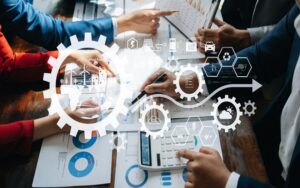Eco-Friendly Sipping Solutions: Opting for Paper Cups for Every Occasion
5 min read
Reassessing our decisions, even in the tiniest areas of our lives, can have a significant impact in a society where environmental consciousness is becoming more and more important. Our choice of beverage containers is one such area that is ready for change. Our carbon footprint and the amount of plastic garbage we produce can be considerably reduced by substituting paper cups for single-use plastic cups. This article discusses the advantages of using paper cups at various gatherings, emphasizing its environmental benefits and adaptability to varied contexts. So, whether you’re considering a paper cups bulk buy option for your next event or aiming for a paper cups bulk buy for your business, the positive implications for the planet make it a decision that resonates far beyond the rim of the cup.
The Environmental Toll of Plastic Cups
The predominance of single-use plastic cups serves as a striking reminder of convenience culture in our modern, fast-paced environment. These ostensibly harmless objects, made for indulgence in the moment, take a heavy toll on our vulnerable biosphere. Plastic cups, which are made from derivatives of fossil fuels, represent our society’s depressingly high reliance on nonrenewable resources. The world’s climate catastrophe is made worse by the manufacturing process alone, which generates large amounts of greenhouse gases.
However, the effects go far beyond manufacturing. When applied to these cups, the resilience that characterizes plastic becomes a damning sin. They continue to exist as enduring reminders of our disposable way of life due to their nearly infinitely long decay times that span centuries. They are carelessly discarded and build up in landfills, urban landscapes, and aquatic environments. Plastic cups, in particular, contribute to the spinning vortexes of marine garbage, entangling marine life and breaking down into microplastics that enter the very center of aquatic food chains, making the seas the primary victim of this disregard. The unfortunate misunderstanding by wildlife is one of the most heartbreaking tragedies. These plastic particles end up acting as death agents rather than being useful since they frequently resemble food to unwary animals. As a heartbreaking monument to humanity’s careless consumption habits, marine animals, from magnificent whales to tiny seabirds, consume or become entangled in plastic waste.
Enter the Paper Cup Alternative
Paper cups stand out as a beacon of sustainability in the shadow created by their plastic cousins. These inconspicuous containers, which are made primarily from renewable materials like wood pulp, have a significantly smaller ecological impact than their plastic equivalents. Their biodegradability, a quality that has the power to alter our consumption patterns, is the cornerstone of this essential differentiation. Paper cups, in contrast to their plastic counterparts, quickly embrace the deterioration cycle by pulsing to the beat of nature. These containers disappear back into the earth within a few weeks, blending in well with the surroundings. This quick breakdown contrasts sharply with plastic’s tenacious tenacity, which persists for generations in landscapes and aquatic ecosystems. The difference between weeks and centuries is highlighted.
Carbon Footprint
When contrasting the carbon footprints of paper cups and their plastic equivalents, a startling difference becomes apparent when buy paper cup. The extraction, refinement, and processing of fossil fuels necessary for the production of plastic cups results in significant greenhouse gas emissions. The environmental cost is greatly amplified by the carbon-intensive process from petrochemical feedstocks to the finished molded form. Paper cups, in sharp contrast, are made from renewable resources, particularly forests that are responsibly maintained. Paper cups are less carbon-intensive because some of the emissions are offset by the carbon absorbed during tree development. Furthermore, the manufacture of paper from wood pulp uses less energy than the technique used to make plastic cups. Paper cups are in a good position because of this cycle’s inherent efficiency as well as the materials’ capacity for regeneration.
Sourcing and Sustainability
In our search for a sustainable future, the importance of using materials that are ethically sourced in the creation of paper cups cannot be overstated. Manufacturers are taking proactive measures to ensure that the wood pulp used in paper cups is produced from perfectly managed forests as they become more aware of the environmental effects of their decisions. Purchasing wood pulp from sustainably managed forests helps to maintain the delicate balance of biodiversity while also preserving the planet’s priceless tree cover. Regeneration and conservation are given top priority in responsible forestry techniques, allowing forests to function as vibrant ecosystems that support a variety of flora and wildlife. As a result, the fragile web of life that depends on these habitats is maintained and resilience against climate change is increased. Manufacturers collaborate with certifying organizations like the Forest Stewardship Council (FSC) to ensure that the wood pulp they purchase adheres to strict moral and ethical guidelines. The FSC accreditation attests that the pulp comes from forests whose logging and cultivation protect local communities, ecological integrity, and the rights of indigenous peoples.
Recycling and Composting
As we work to solve the problems of waste management and resource conservation, the recycling potential of paper cups has drawn more and more attention. While some paper cups have a polyethylene layer to stop leaks, technological advancements are making recycling more feasible by making it easier to separate and treat the paper and plastic components. New recycling techniques are being developed that can efficiently disassemble paper cups. These techniques make use of improvements in technology for sorting materials and specialized facilities that can separate paper fiber from plastic liner. What was originally thought to be a complicated composite structure becomes a stream of materials that may be directed into recycling circuits as a result. This innovation is essential for changing and preventing paper cups from ending up in landfills.
Although switching from plastic to paper cups might seem like a little move, it has a big impact on the environment. Every decision we make matters as the urgent need for sustainable practices becomes more widely recognized. We can actively help reduce plastic pollution, conserve resources, and create a safer, healthier environment for future generations by embracing paper cups for a variety of options like food packing box. Our decisions as customers convey a strong message to businesses and decision-makers. We can push companies to embrace sustainable practices and promote environmental policies by repeatedly choosing environmentally friendly substitutes, like paper cups. Raise a paper cup to a greener, more sustainable future the next time you reach for a beverage and think about the effects of your decision.





